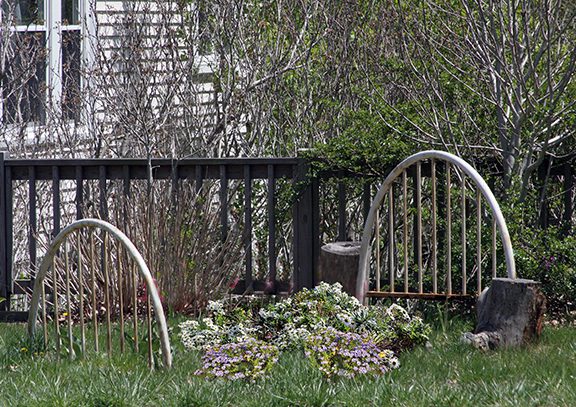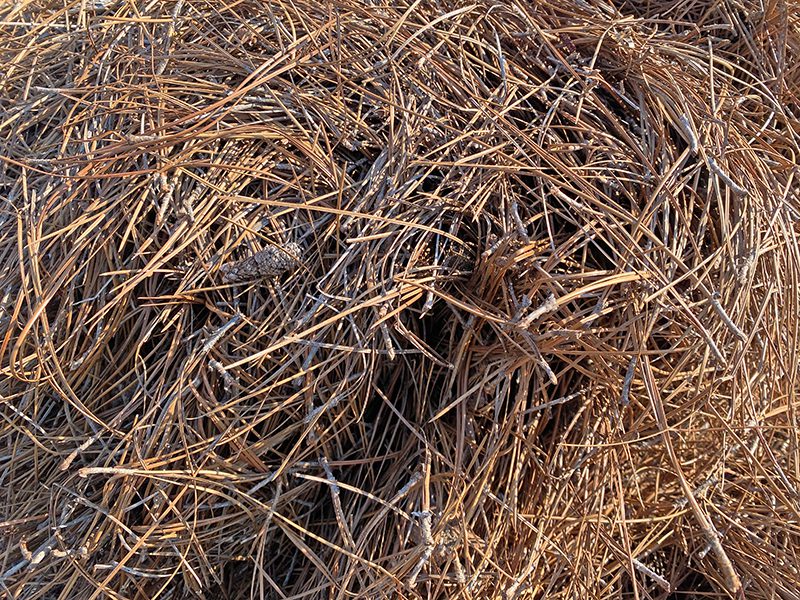Putting The Perennial Garden To Bed
Putting The Perennial Garden To Bed
Many of our customers need advice about putting their perennial gardens to bed. “What should I be doing at this time of year?” they ask. “Can I cut my Montauk Daisies down now? How about the grasses?”
Here are some general guidelines for putting your perennial garden to bed for the winter.
Cutting Back When it comes to cutting perennials back the general rule is to leave any plant that has green, good looking foliage. If the leaves look like they are capable of photosynthesis then they are doing a job for that plant. You can cut back those that have turned yellow or brown, although many people want to leave this year’s plants for birds that feast on the seeds and insects that over-winter there. Some people leave some plants and cut back others, while others wait and do the perennial clearing in the late-spring.
You shouldn’t cut down woody plants such as lavender, roses, and Russian Sage, or early spring bloomers such as creeping phlox, candytuft, Euphorbias, or soapwort. If in doubt, leave it in the garden for now and cut them down in the spring.
Montauk Daisies We get more questions about this perennial than any of the others, so it gets a mention to itself. Leave most upright stems of Montauk (Nippon) daisies. If the stalks have flopped onto the ground you can remove them, and you can trim those that are upright and sturdy back by a third. This perennial is better treated as a woody shrub so that the stems can grow stronger.
Leaves Although chopped leaves are great mulch and soil amendment for perennial gardens, whole leaves that fall into some gardens should be removed. If the leaves aren’t chopped they can form heavy layers that can smother your plants. They are also messy looking, and blow around the garden. Remove the whole leaves and either chop them with a lawn mower or place them in a compost pile to break down. However, we understand now that some native insects over-winter in leaves, so if you have wild areas, woods, or places where the leaves won’t hurt more formal perennial gardens, by all means leave them.
Also, for plants that are marginally hardy, leaving the old stems in the garden through the winter, and perhaps surrounding them with mulch (see below) gives them a better chance at life after winter is over.
Winter Protection On the Cape most of us don’t have to protect all of our standard perennials. Marginally hardy plants can be covered with hay or salt marsh hay in late December in normal winters. If the season starts out extremely cold and the ground starts to freeze this protection can go down in late November or early December. In very warm winters you can wait until after the holidays
Grasses Most grasses are left in the garden because they supply winter interest in otherwise bare beds. Cut them down from February on if they start to look tattered.
Soil Amendment Fall is a great time to spread compost or composted manure over the surface of a perennial bed. You don’t have to dig it in and all you need is about an inch of compost or manure. In the spring mulch can be spread right over this amendment layer.
Transplanting If you haven’t done your transplanting and dividing yet you can still take care of this in early November. Be sure to water your divisions and transplants in well, however, and apply a layer of dark compost on the top of the soil to absorb the heat of the sun. When the soil is kept warmer the roots will grow and reestablish more quickly.
pH Adjustments If a soil test has indicated that your perennial garden is too acidic, lime can be applied at this time of year.


8 Comments
Leave a Comment
Subscribe To Our Newsletter
Sign up for our weekly email about sales and events.

Love your emails. Don’t apologize for your feelings…they are valid and you are merely echoing what the rest of us are feeling. Blessed Thanksgiving and Merry Christmas.
Hi
I love your newsletters! I live in HyannisPort in the summer and NJ the rest of the year. I have been to Hyannis Counrty Garden n uncountable number of times, it is terrific.
My question is, it has been a warm and beautiful fall. My hydrangeas are starting to bud! What will this mean for next seasons bloom??
Thanks
Linda – good question and one that many people have! Usually hydrangeas form buds that swell at this time of year and we often see them almost begin to act as if it’s spring. The winter weather will determine if this is a problem or not. If the winter is fairly mild, with lows in the 20’s or teens, those buds wil be fine. But if the winter goes into single digits, or if we have really cold winds from March into May, those buds might get zapped and not become shoots with flowers on the ends. Winters are changing and we gardeners have to re-think our approach to our landscape plants. If you want to be sure that you’ll have hydrangea flowers on particular plants next year you might want to wrap burlap around them (after the leaves have fallen) and pile in salt marsh hay or leaves from your oak trees inside to protect those buds.
a beautiful picture of mallows and not a word on what to do with them in the fall
Any of the mallows can get cut down in the fall from mid-September on. True for all herbaceous perennials (aka perennials that die to the ground in the winter.)
Nan et alia, I sincerely appreciate all the great advice!! I may have a brown set of fingers and thumbs, but I try! Thank you all, will bring doughnuts soon!! Bob
When should I cut back the small blue irises, blue flag I believe? Their leaves seem to stay green forever!!! Thanks!
Patsy – any time now you can cut them back. In the fall you can cut them and no harm done!